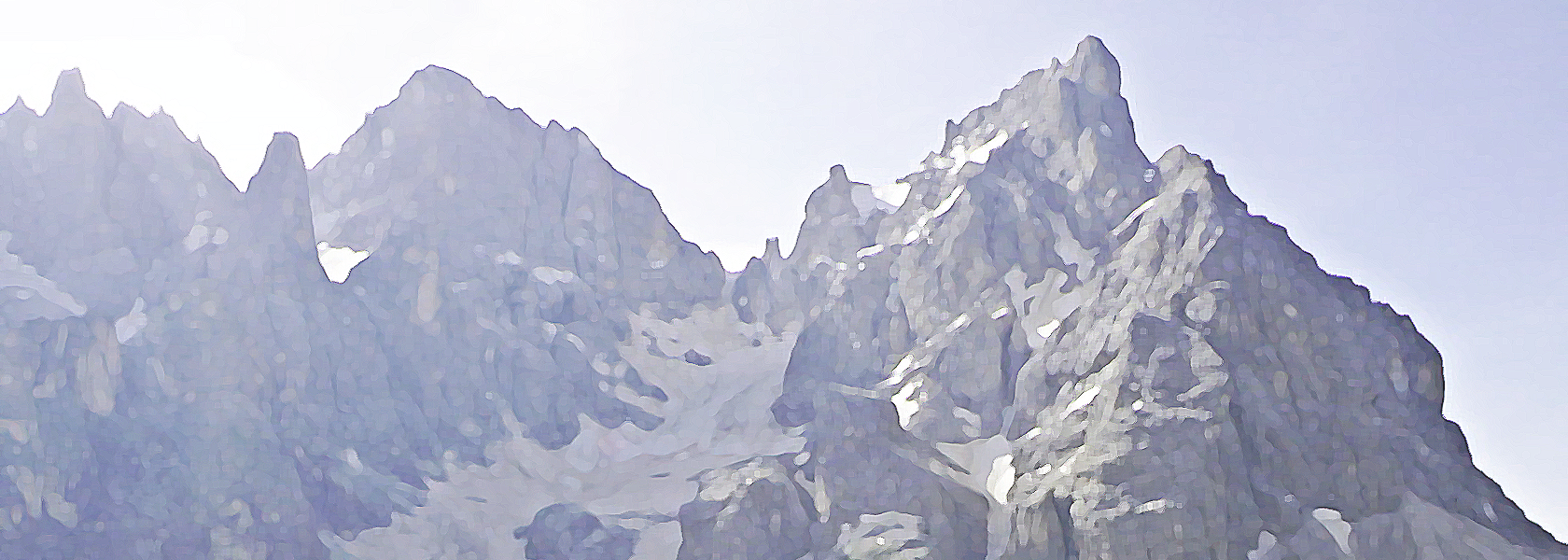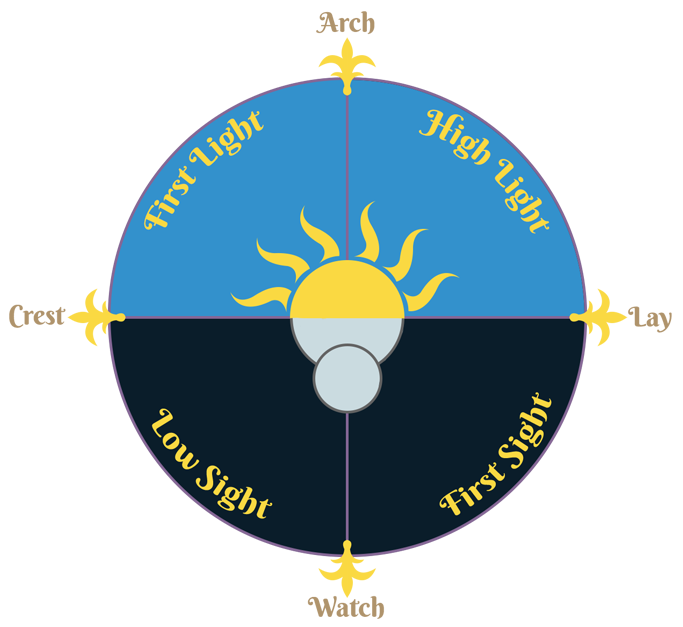The Calendar
The calendar is used by the majority of Kollark, with the exception of the few Provinces that either cannot follow the moons or decide not to for other reasons. The Kollark Calendar is based on the movement of Kollark's two moons; Ospian, the larger, and Faenith, the smaller.
Before the calendar, Kollarkians would use positions of the sun to tell the time of day, and the seasons to tell the time of year. Some cultures used the moon to break down the months, which made the creation of the Kollarkian Calendar even easier. The official calendar was created by the
Moonres Church soon after the creation of the
Divines. The Moonres Church's patron Divine is Diasa the Reflection, who is able to see through the moons' views. This gave the inspiration to create a calendar based on the moon's cycles; one cycle of Faenith became a week, while Ospian's cycle became a month. By the time the
Borders rose, the calendar had become quite popular, and
Borderless continued to propagate its use, which made keeping time while travelling easier for them.
The Year and Seasons
Each year is 480 rises (days) long, and has 12 months. During the year, there are six distinguishable seasons which vary in appearance and length within each Province.
Idris is the time of year where night lengthens, temperatures drop, water begins to freeze over, and snow begins to fall. Most flora have shed their leaves, or have died from the cold. Fauna becomes more scarce as they hibernate or migrate for food. This season is common and gets lengthier the further south or north of the planet.
Kaili is the time of year where the rain comes heavy and often; this can cause bad flooding in lowland areas. This often occurs as the snow and ice is melting. Fauna begins to wake up from hibernation in order to move to safety from flooding. This season is quite common in many provinces; length and intensity depends on geographical locations.
Habor is marked by the complete disappearance of snow and ice, and the budding of new plants. The rainfall has lessened considerably. Fauna begin to return from migration and many will begin producing offspring. This season is seen throughout Kollark except in a rare Province.
Hiru is observed when the majority of flora is at full growth. Insects are more active, fauna offspring are beginning to grow rapidly, and the days grow long and hot. Rainfall begins to become sparse. This season's intensity and length grow the closer to the equator a Province is.
Valo occurs when rainfall stops completely, and rivers and lakes begin to drop. Some flora will die due to lack of water during this time, and fauna may become more aggressive in search of food and water. This season is relatively uncommon in most Provinces, and is often short. Some Provinces suffer Valo for months on end.
Kasi is the time of year when flora begins to turn brown, crops are ripe and ready to harvest, and rain returns to average. Temperatures begin to lower and fauna begin eating more often or leave on migration. This season is observed by most of Kollark, with the rare exception.
Months
Each month is decided by the larger moon, Ospian, which takes 40 days to complete its full cycle. The months begin and end with Ospian in the new moon phase. Occasionally, both moons will be full on the same rise, and people will celebrate the
Festival of Moons. The names of the months follow the story of
Kathe
and their death, though very vaguely and metaphorically. Each month is referred to as a "moon", and there are 12.
- Dust Moon
- Nothing Moon
- Bone Moon
- Clear Moon
- Budding Moon
- Flower Moon
- Bounty Moon
- Feather Moon
- Sea Moon
- Dagger Moon
- Blood Moon
- Falling Moon
Weeks
Weeks are planned by the smaller moon, Faenith's, movement. It takes nine days for Faenith to complete its cycle, meaning that each week begins and ends on a new moon. Each of the nine days are named after Faenith's cycle.
- Onrise
- Harise
- Qurise
- Darise
- Morise
- Sirise
- Agris
- Alrise
- Furise
Days
Each day is set up by the movement of the sun through the sky. A full cycle of one day and one night is known as a rise. There are 34 hours in a rise, and day and night cycles will fluctuate depending on the time of year. A rise begins as soon as the sun first appears over the horizon. The day is broken up into four times, known as Rise Times, with precise "points" known as Rise Points in between. Hours and minutes are used mostly by those in more developed provinces, who have the technology to keep perfect time; otherwise most Provinces use sectioned time.
Rise Times
- First Light is the time between sunrise and noon.
- High Light is the time between noon and sunset.
- First Sight is the time between sunset and midnight.
- Low Sight is the time between midnight and sunrise.
Rise Points
- Crest is when the sun first appears over the horizon. This marks the end of Low Sight and the beginning of First Light, and a new rise.
- Arch is when the sun is at its highest point. This marks the end of First Light and the beginning of High Light.
- Lay is when the last of the sun disappears from the horizon. This marks the end of High Light and the beginning of First Sight.
- Watch is when Ospian reaches its highest point. This marks the end of First Sight and the beginning of Low Sight.









Fantastic layout! I love your month names :D
Thank you so much! Hummingbird on the discord actually linked me her article that kinda inspired the layout for me, but I had a lot of fun building this part up, especially the graphic!